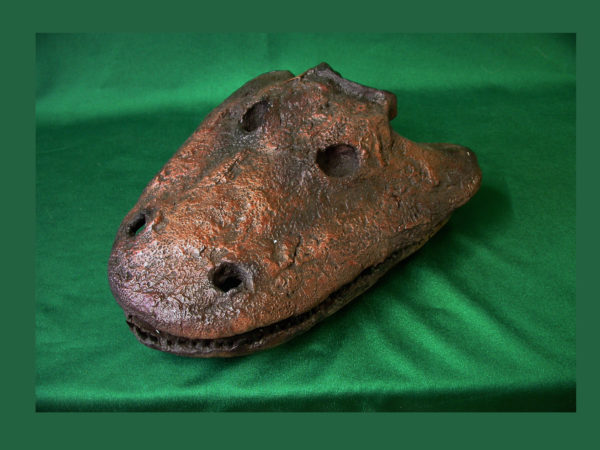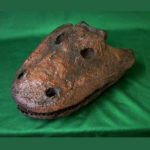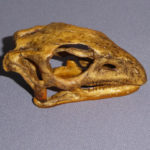Eryops Megacephalus Skull Replica
$665.00
Eryops megacephalus, the fossils of which are found mainly in early Permian (about 295 million years ago) rocks of the Texas Red Beds, located in Archer County, Texas. Fossils have also been found in late Carboniferous period rocks from New Mexico.
- Description
- Additional information
Description
Eryops Megacephalus Skull Replica measures 13x11x2. The Eryops Megacephalus Skull Replica is museum quality polyurethane cast made in USA. 2-part skull (separate cranium & jaw). Giant primitive amphibian. Our precise skull can be used as a teaching tool, museum skull exhibit, home décor skull, or office décor skull.
Semi-aquatic temnospondyl amphibian found primarily in the Lower Permian-aged Admiral Formation (approximately 295 million years ago) of Archer County, Texas, but fossils are also found in New Mexico and parts of the Eastern United States.
Eryops Megacephalus averaged a little over 4.9 to 6.6 ft. long and could grow up to 9.8 ft. making them among the largest land animals of their time. Adults weighed about 90 kilograms (200 lbs). The skull was proportionately large, being broad and flat and reaching lengths of 2.0 ft. It had an enormous mouth with many curved teeth like the frog.
Its teeth had enamel with a folded pattern, leading to its early classification as a “labyrinthodont” (“maze toothed”). The shape and cross section of Eryops teeth made them exceptionally strong and resistant to stresses.
The palate, or roof of the mouth, contained three pairs of backward-curved fangs, and was covered in backward-pointing bony projections which would have been used to trap slippery prey once caught. This, coupled with the wide gape, suggest an inertial method of feeding, in which the animal would grasp its prey and thrust forward, forcing the prey farther back into its mouth.
The skeleton of Eryops Megacephalus was much more strongly built and sturdy than related temnospondyls. The limbs were especially large and strong. The pectoral girdle was highly developed, with a larger size for increased muscle attachments. Most notably, the shoulder girdle was disconnected from the skull, resulting in improved terrestrial locomotion.
The crossopterygian cleithrum was retained as the clavicle, and the interclavicle was well-developed, lying on the underside of the chest. In primitive forms, the two clavicles and the interclavicle could have grown ventrally in such a way as to form a broad chest plate, although such was not the case in Eryops Megacephalus.
Shop More Museum Quality Skulls in Amphibian Skulls Store
Additional information
| Weight | 34 lbs |
|---|---|
| Dimensions | 13 × 11 × 2 in |
| Eryops Megacephalus Facts | Kingdom: Animalia |






